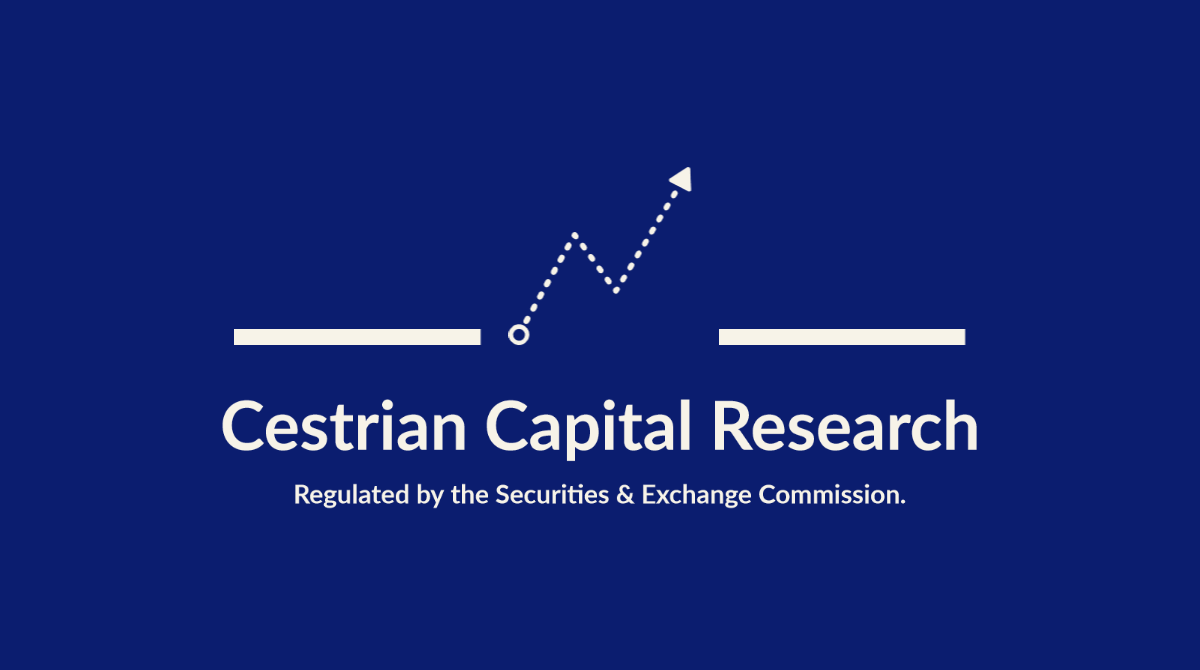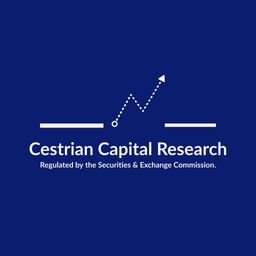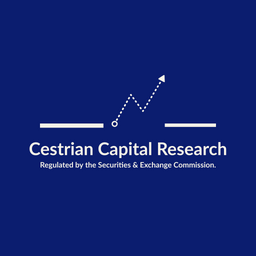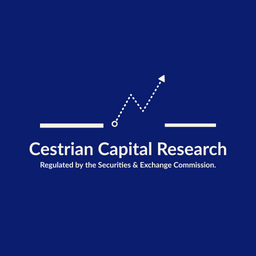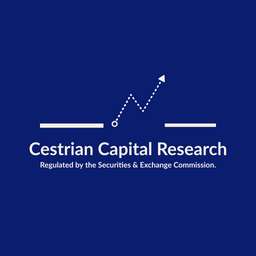Nonfarm Payrolls Review, CPI Preview, Powell Testimony, TLT Analysis [No Paywall]
![Nonfarm Payrolls Review, CPI Preview, Powell Testimony, TLT Analysis [No Paywall]](/content/images/size/w960/2025/02/unnamed.png)
By Yimin Xu. We walk through Friday's labour market data, with an analysis of the current FOMC pricing, Wednesday's CPI, Powell's script, and TLT's price technicals.
DISCLAIMER: This note is intended for US recipients only and, in particular, is not directed at, nor intended to be relied upon by any UK recipients. Any information or analysis in this note is not an offer to sell or the solicitation of an offer to buy any securities. Nothing in this note is intended to be investment advice and nor should it be relied upon to make investment decisions. Cestrian Capital Research, Inc., its employees, agents or affiliates, including the author of this note, or related persons, may have a position in any stocks, security, or financial instrument referenced in this note. Any opinions, analyses, or probabilities expressed in this note are those of the author as of the note's date of publication and are subject to change without notice. Companies referenced in this note or their employees or affiliates may be customers of Cestrian Capital Research, Inc. Cestrian Capital Research, Inc. values both its independence and transparency and does not believe that this presents a material potential conflict of interest or impacts the content of its research or publications.
Hi Cestrian friends,
Friday’s Nonfarm Payrolls provided the comfort that the Fed needed to completely refocus on inflation.
Today, we walk through the key details from Friday’s report, but also look ahead for the FOMC possibilities for the remainder of 2025, as well as the CPI report on Wednesday. I worry that CPI could be hotter than the market expectation, which may send yields higher.
Powell is currently in Washington testifying in front of the Congress. Will he stick with the script - and what is that script? I also offer an update on the TLT price technicals as well as the key factors to watch.
Finally, did I mention that the Fed believes that “valuations in equities, corporate debt, and real estate remain high relative to fundamentals”? This could be found in the latest Monetary Policy Report, which I have summarised in the final section. It does mean the Fed is not concerned about markets consolidating or dropping in the near term should the pause in rate cuts affect them.
If you find the article helpful, please share this article with friends and colleagues.
February 11, 2025
🛩️ My private channel at Cestrian to provide winning trade ideas in 3 key areas:
- Macro Instruments – including TLT, Fed Funds, Gold, Silver, USO
- Crypto – including BTC, ETH, SOL, COIN and Crypto miners
- Large-cap Equities & Private Credit – Magnificent 7, Financials, Consumer, Business Development Companies (BDCs), Chinese ADRs
Our subscribers enjoyed a BTC buy alert at $57k in August, and ETH at $2600 in September.
🕊️ Right now, you can claim a 7-day free all-access trial via Cestrian here:

1. Friday’s Nonfarm Payrolls Showed Lower Unemployment
Headline Numbers Remained Strong

Friday’s Nonfarm Payrolls came in at 143k net new jobs added, undershooting the consensus estimate of 169k.
However, the December and November data were both revised up by a total of 100k, more than enough to offset the January “miss”. The December net new jobs added of 307k was the highest since February 2023. What “Labour Market Softening”?

Labour participation increased from 62.5% to 62.6%. At the same time, the Unemployment Rate calculated using Household Data actually dropped by 0.1% to 4.0% in January, back to the May 2024 level. This was before everyone panicked about the fast rising unemployment in August last year.
Employment Change By Industry

Most of the jobs added were in the Health care and social assistance sector, same as in December, followed by Retail trade and Government. However, December’s strong Professional & business services, Leisure & Hospitality, and Transportation & warehousing did not do as well in January.
Wages Rose Quickly

Hourly earnings grew by 0.5% MoM, much faster than the consensus estimate of 0.3%. This puts the YoY figure at 4.1%, same as December and the fourth 4+% growth in a row.
The yellow dotted line in the graph above shows the 3-month annualised growth rate of hourly earnings if we extrapolated the past 3-month MoM data into an entire year. The annualised rate points upwards at 4.5%, suggesting that the near-term trend is growing much more quickly than the long-term trend.
Why does this matter? I will explain in the CPI section below how strong hourly earnings tend to correlate with high Core CPI, which is not what the Fed wants to see.
Job Openings and Labor Turnover Survey (JOLTS)

Finally, although the JOLTS data lag by an additional month, we see no sign of stress in the labour market, apart from what the Fed describes as “normalisation”.
Overall Assessment
Overall, the Fed should be very comfortable with the labour market, as they refocus on bringing down inflation back to 2%. As long as Unemployment Rate stays below 4.4% (or not very long above it), the Fed would not be concerned by labour market softening.
2. FOMC Path Projection
We use the Fed Funds Futures to project the market pricing of future rate cuts for every FOMC out to the next 2 years (but most reliably so for the next 12 months).
FOMC Date | Before Meeting | Post Meeting | Hike/ Cut in % |
|---|---|---|---|
03/19/25 | 4.33 | 4.3 | -0.03 |
05/07/25 | 4.3 | 4.27 | -0.03 |
06/11/25 | 4.27 | 4.21 | -0.06 |
07/30/25 | 4.21 | 4.11 | -0.1 |
09/17/25 | 4.11 | 4.06 | -0.05 |
11/05/25 | 4.06 | 4.01 | -0.05 |
12/17/25 | 4.01 | 3.96 | -0.05 |
01/28/26 | 3.96 | 3.91 | -0.05 |
Currently, the market does not expect another cut sooner than July, with a reasonable chance for a second cut at some point in H2.
This level of pricing is in line with the FOMC projections, but assumes that inflation does get pushed higher by tariffs and that the US will avoid a recession in the near term.

3. Will CPI Be Hot?

There are several key factors to consider for this set of report. The current consensus is for Headline CPI to slow a touch MoM from 0.4% to 0.3% in January, keeping the YoY figure at 2.9%. Core CPI is expected to quicken slightly from 0.2% to 0.3% MoM, but slow to 3.1% on a YoY basis.
US Oil Fund ETF (USO)

First, we saw a large spike in energy prices in late December and early January, escalated by both a very cold winter in US and Europe and the US sanctions on Russia. The December CPI already saw an MoM rise in Energy inflation by a massive 2.6%. I think we risk seeing another high print for Energy in January, which can lead to an above-expectation Headline CPI.
The energy prices for 2025 will likely be very volatile, due to the supply factors around OPEC+ production increase, US production increase, and Russia & Iran sanctions. On the demand side, China’s economic growth is a big unknown for the year, heavily relying on the extent of its government’s stimulus. (We have broken down these factors in a previous article here.)
Hourly Earnings vs Core CPI

My second concern is that the hot hourly earnings data in January Nonfarm Payrolls could translate to above-expectation Core CPI (ex-housing), although the estimates are already wagering on a higher MoM number than December.
Historically speaking, Hourly Earnings and Core CPI show close correlation when Hourly Earnings rise over 4% YoY, which is the world we live in now.
Shelter CPI
Shelter inflation (a combination of “Rent” and “Owner's Equivalent Rent”) is trending down over time but at a much slower pace than the Fed likes.

In December, both Rent and Owners’ Equivalent Rent saw a rebound MoM, although both still lower YoY (in mid-4%).

If December was worrying, look at that big uptick in January from RedFin’s data of Median Asking Rent MoM changes.
There is a big caveat, which is that Owner’s Equivalent Rent actually doesn’t exist. This makes its predictions inherently challenging.
“It’s worth 54% of the CPI. What do you mean it doesn’t exist?”
Because house owners, surprisingly, do not have to pay themselves rent, the data comes from BLS asking them, “If someone were to rent your home today, how much do you think it would rent for monthly, unfurnished, and without utilities?”
And you wonder why it doesn’t come down easily.
Motor Vehicle Insurance
Motor Vehicle Insurance accounts for 16% of the CPI. This is the piece I am least worried about.
Motor Vehicle Insurance spiked after COVID due to a big jump in cars on the road, a rising number of new drivers, and supply-chain bottlenecks for parts. Insurance costs trend down as car sales normalise, which it has done.

Source: Insurify, YX Insights
Using Insurify’s state-by-state motor vehicle insurance data, we see that on average car insurance actually declined MoM. You won’t see a negative number in the CPI as BLS calculates the outputs differently, but car insurance should not be a problematic line item for Wednesday’s data.
Overall, while the consensus estimates have factored in faster Core CPI growth, I am cautious of the upside risk in both the Headline and Core CPI figures. Should my concerns come true, we could see the 10-year yield continue the latest bounce off the 4.4% low.

4. Powell Testifies…Might He Rock The Market?
Jerome Powell testifies on the economic outlook and recent monetary policy actions before the Joint Economic Committee in Congress. This is a standard semi-annual testimony the Fed Chair has to do every year.
The good news is that the Fed has already submitted a Monetary Policy Report to the Congress on February 7. Powell unlikely ventures out of the content of the report. I have attached a summary of the essential information from the report in Section 5.
Powell is in a firm wait-and-see mode. This means his answers will centre around 1) defending the 2024 cuts, including the yo-yo between the labour market and inflation focus, and 2) highlighting the 2025 uncertainties to justify not cutting until greater clarity arises (which can take some time).
When asked about the impact of Tariffs (“is that why you raised your PCE targets for 2025?”). Powell should just say “we don’t know the timing and extent of the exact policies still. We need more time and data to assess their impact. Although we have model simulations and the 2018 playbook, today’s economy and US trade balance have drastically shifted from back then.
5. TLT Technical Analysis
TLT Daily (https://www.tradingview.com/x/FbFesuXM/)

While I lean towards TLT having bottomed in January, we are yet to see a complete 5 waves up from the lows to confirm the trend reversal. Right now, we have only got 3 waves up, where wave 3 / c is the same length as wave 1/ a.
The risk is that the latest rally is just another corrective bounce, with the bearish trend intact. This week is crucial given my concerns for the inflation data.
Until we get another high, ideally above 91, we cannot confirm a bullish trend yet.
TLT Weekly (https://www.tradingview.com/x/7BiEFmNm/)

My larger-degree picture remains that we should be looking at wave (C) of wave 4 soon, which points towards a target region of $103-108. Breaking the October 2023 low of $82 would invalidate my thesis.
Bonds are in a 4-year bear market. Patience is required for confirming the near-term bottom.
10-Year Yield

I would point out that breaking above 5% for the 10-year yield is not an easy feat. Since 2003, the 10-year Treasury has spent no more than 5 months in the 5%+ region.
The productivity gain created by technology (cloud, AI) in the long run is a great deflationary force. Moreover, China is currently seeing deflation forces at play, which it easily exports to US (through cheaper goods). Tariffs on Chinese products may slow this deflationary trend, but it is a slowdown in deflation rather than a push for inflation.
10-Year Term Premium

Due to investor concerns for persistent inflation and fiscal discipline, the 10-year term premium has shot up into a positive territory over the past 6 months.
Scott Bessent has recently confirmed that Trump’s primary goal is to lower the 10-year rather than making the Fed do more cuts. Therefore, I expect the current administration to really focus on reducing term premium through DOGE’s spending cut efforts. Elon Musk has said DOGE will work to cut $2 trillion from the federal budget. Moreover, Trump believes tariffs could boost the Federal revenue.
All of the above are very fast evolving pieces, subject to great uncertainties domestically and abroad. We will continue to keep an eye on how the bond market reacts.

6. A Summary Of Fed’s latest Monetary Policy Report
1) Where we are at:
In 2024, inflation has moderated but remains slightly above the FOMC target of 2%. The PCE Price Index increased by 2.6% year-over-year in December, a decline from its peak of 7.2% in 2022. The Core PCE, which excludes food and energy, rose by 2.8%, slightly lower than in 2023.
The labour market has stabilised, with the unemployment rate concluding 2024 at 4.1% following an increase in the first half of the year. Job vacancies levelled off in the second half, suggesting a balanced labour market.
The FOMC reduced policy rates by 100 basis points in 2024, specifically in September, November, and December, bringing them to a range of 4.25% to 4.5%. The cuts were justified by a greater confidence in inflation sustainably returning to 2%, easing labor market tightness, and appropriately recalibrating the monetary policy stance.
Regarding quantitative tightening, the Federal Reserve continues to decrease its holdings of Treasury and mortgage-backed securities. Since June 2024, the Fed has reduced its assets by $297 billion, and by $2 trillion since June 2022.
Financial conditions remain somewhat restrictive, with long-term Treasury yields rising, short-term Treasury yields declining, and corporate bond spreads narrowing.
2) Economy and Financial Stability
Real GDP grew 2.5% in 2024, slightly slower than in 2023. Consumer spending remained robust, fuelled by a solid labour market and rising real wages. Manufacturing output stagnated, partly due to interest-sensitive sector weakness.
Valuations in equities, corporate debt, and real estate remain high relative to fundamentals.
Household and business debt-to-GDP ratio continued to decline, reaching two-decade lows.
Bank capital levels remained above regulatory minimums, but some fair value losses on fixed-rate assets persisted. Hedge fund leverage remained high and concentrated.
3) International Developments
In the second half of 2024, global economic growth remained modest. The manufacturing sector continued to experience weakness, particularly in Europe, largely due to elevated energy costs.
Conversely, Asia's high-tech exports demonstrated robust performance, bolstered by demand from the United States for artificial intelligence and data centre technologies.
In China, while export activities remained strong, domestic demand was subdued despite the implementation of stimulus measures.
The US Dollar appreciated in the second half of 2024, influenced by higher interest rates in the United States, its economic resilience, and political and fiscal challenges in other economies.
